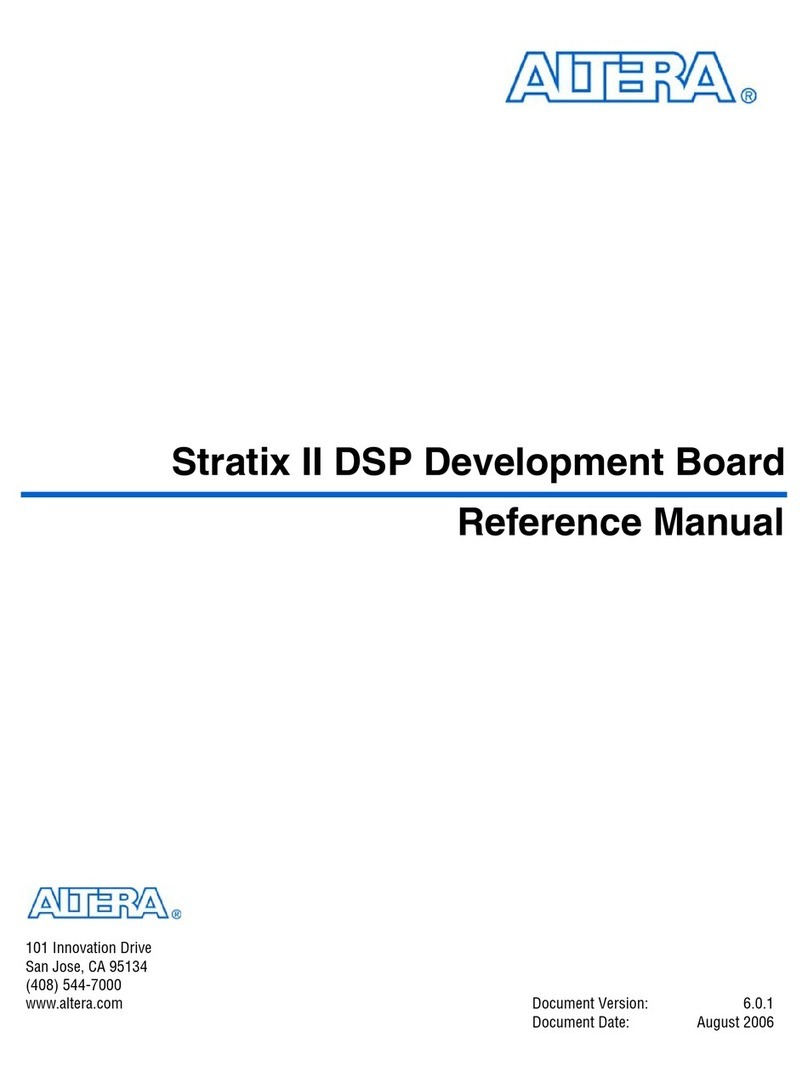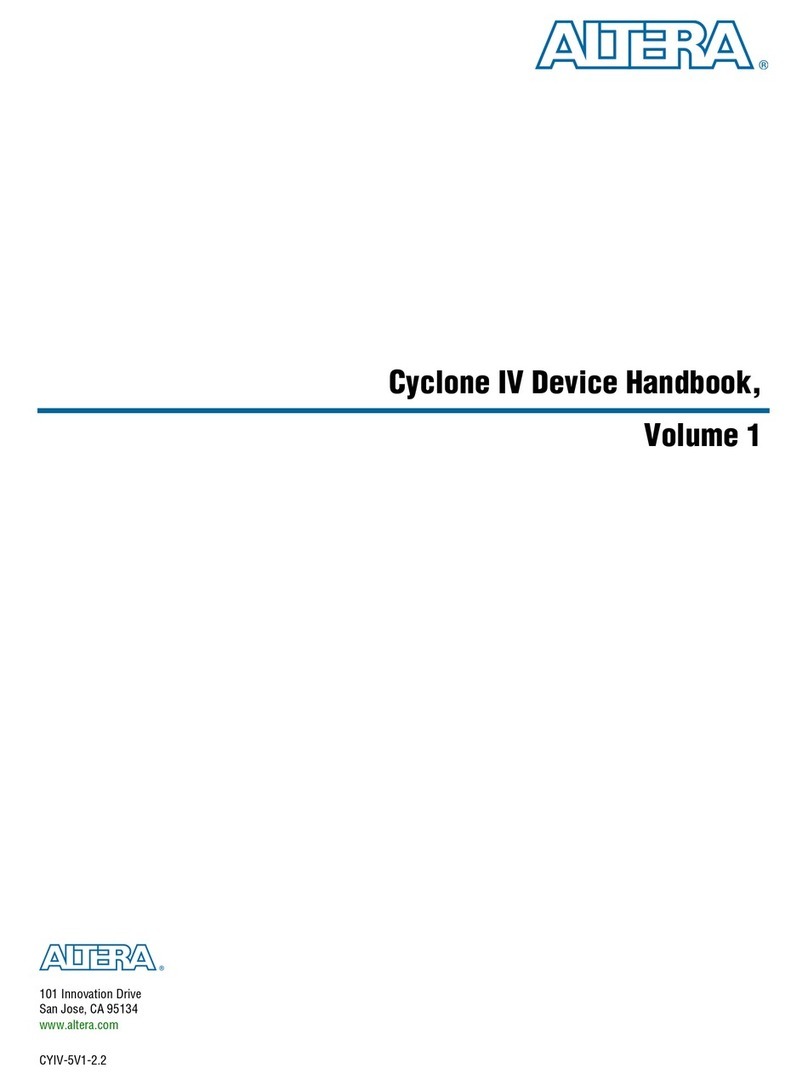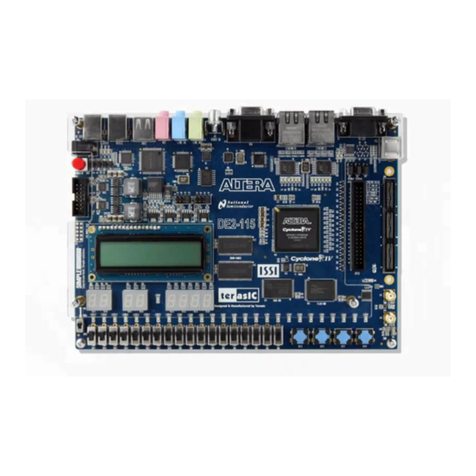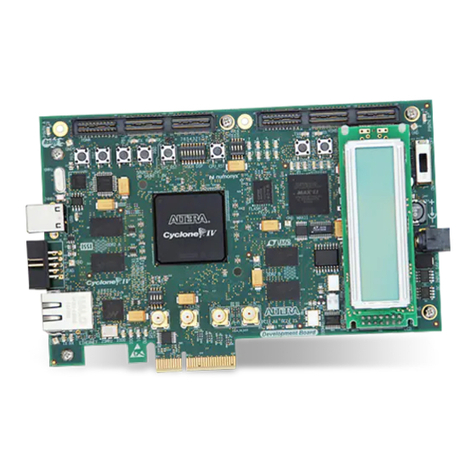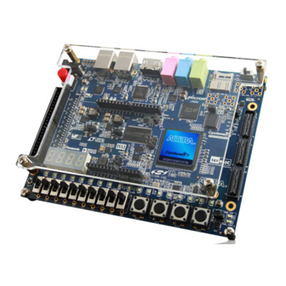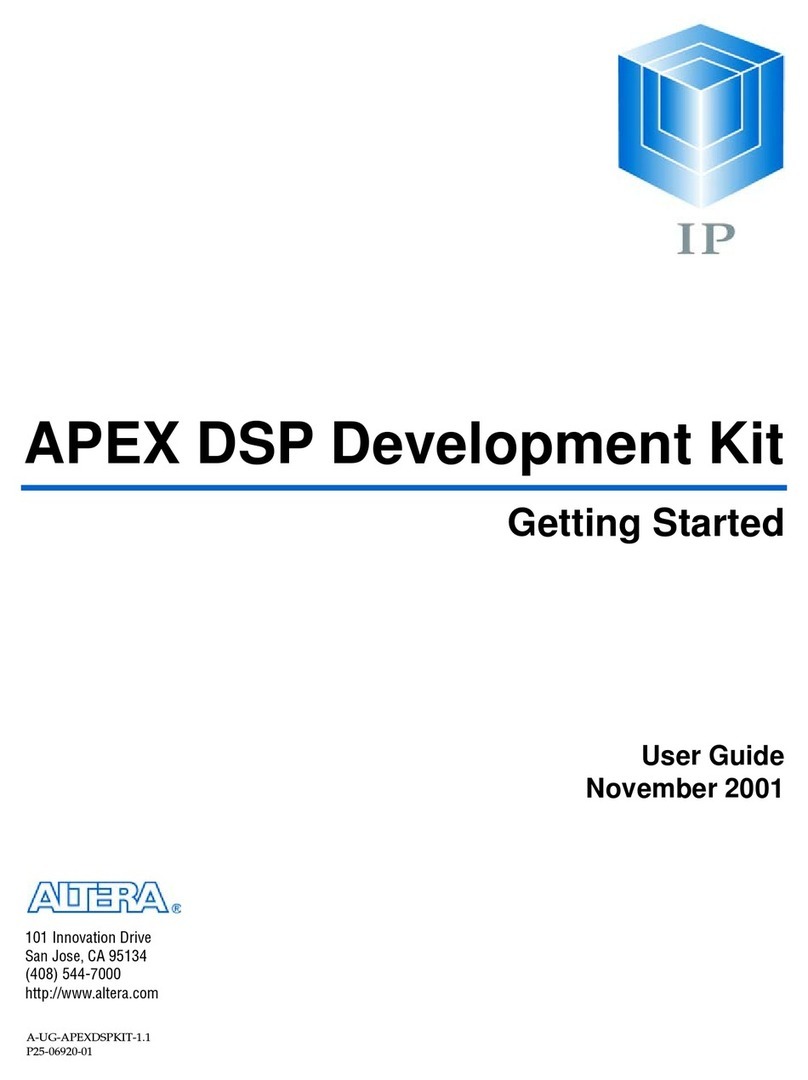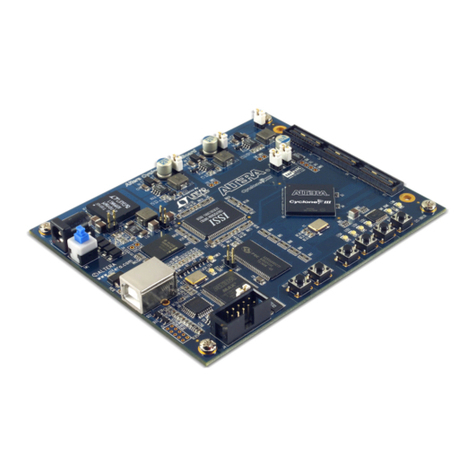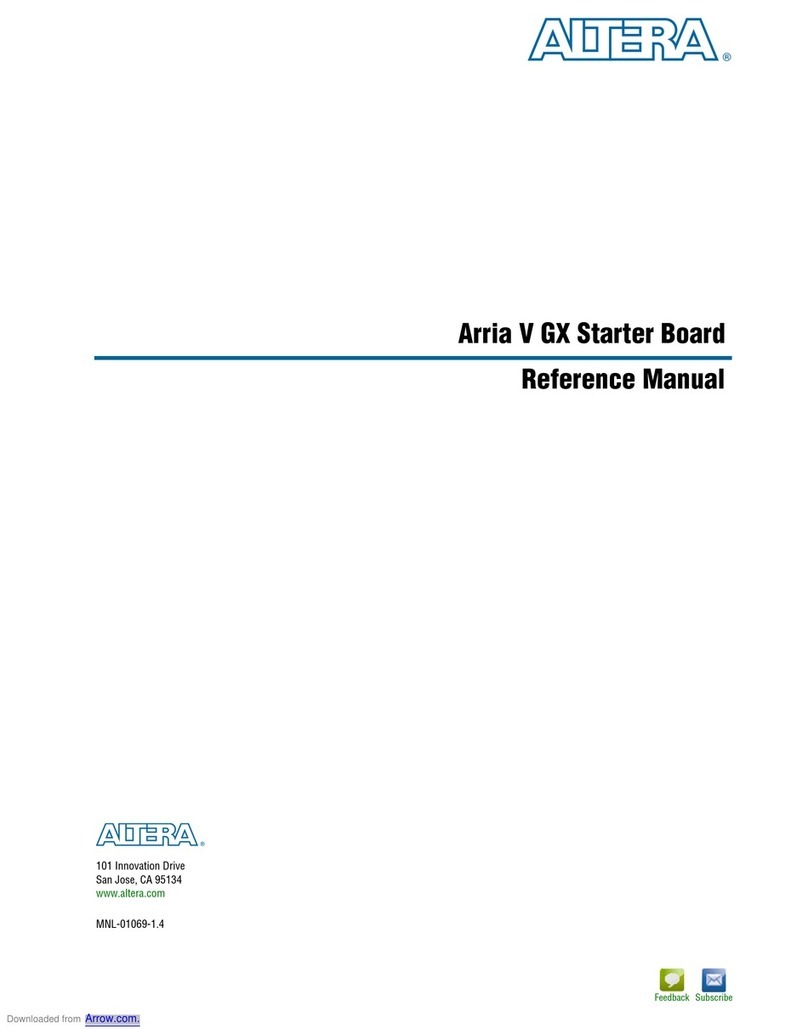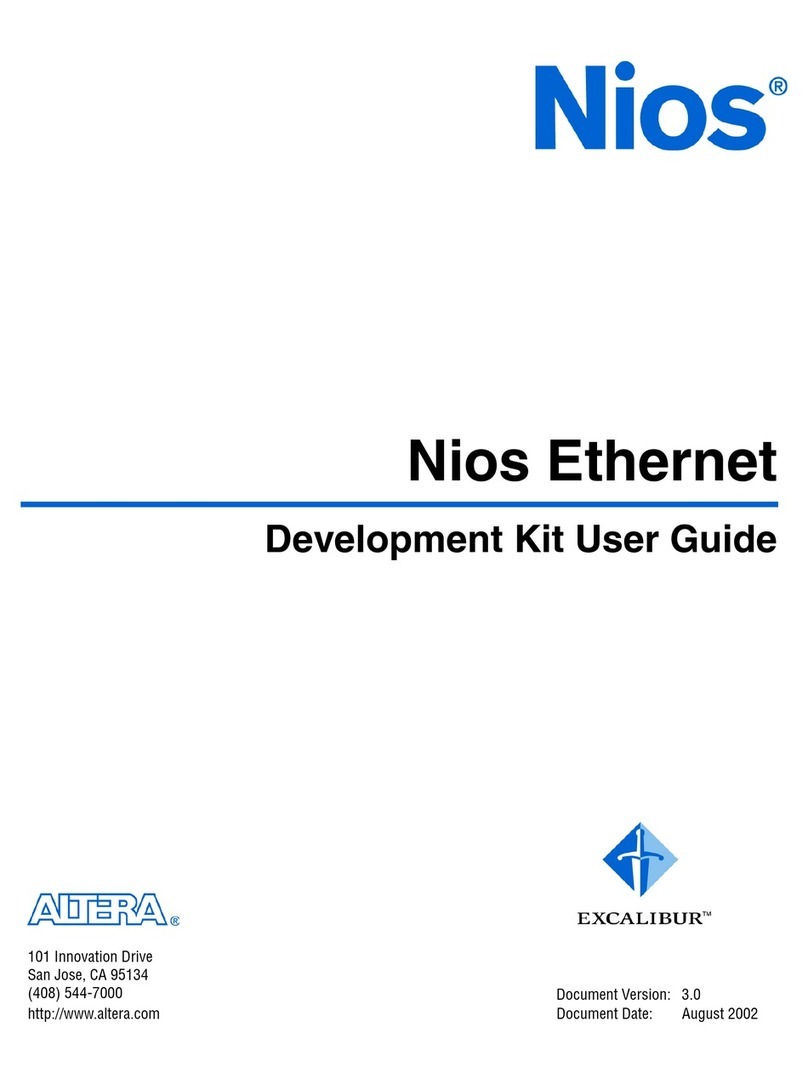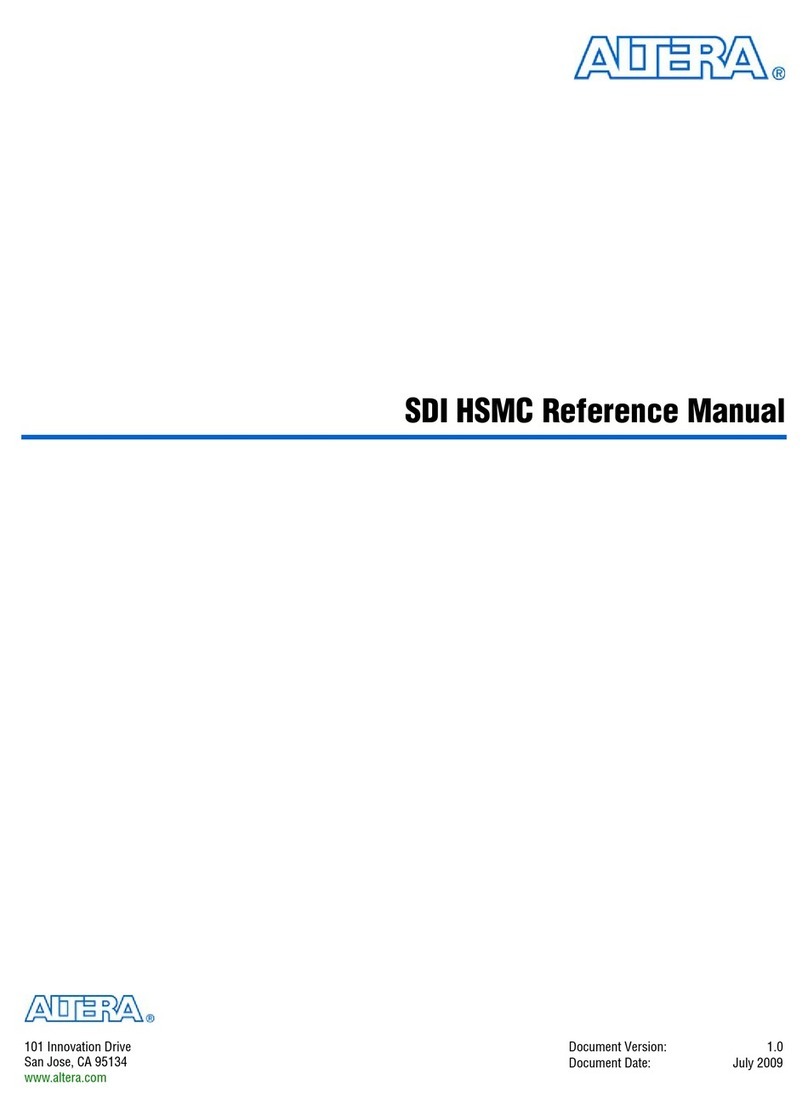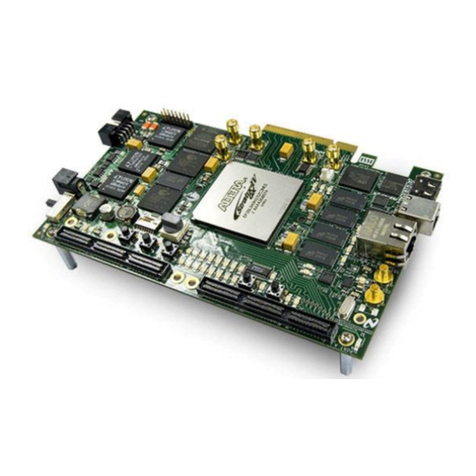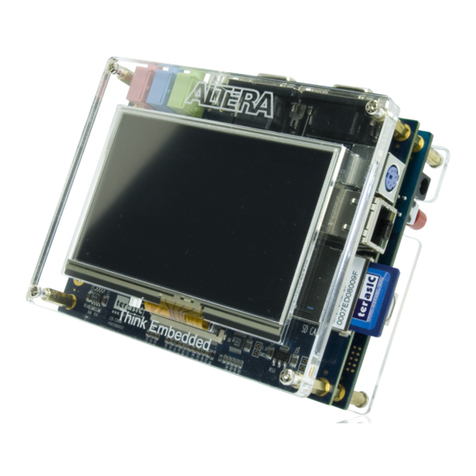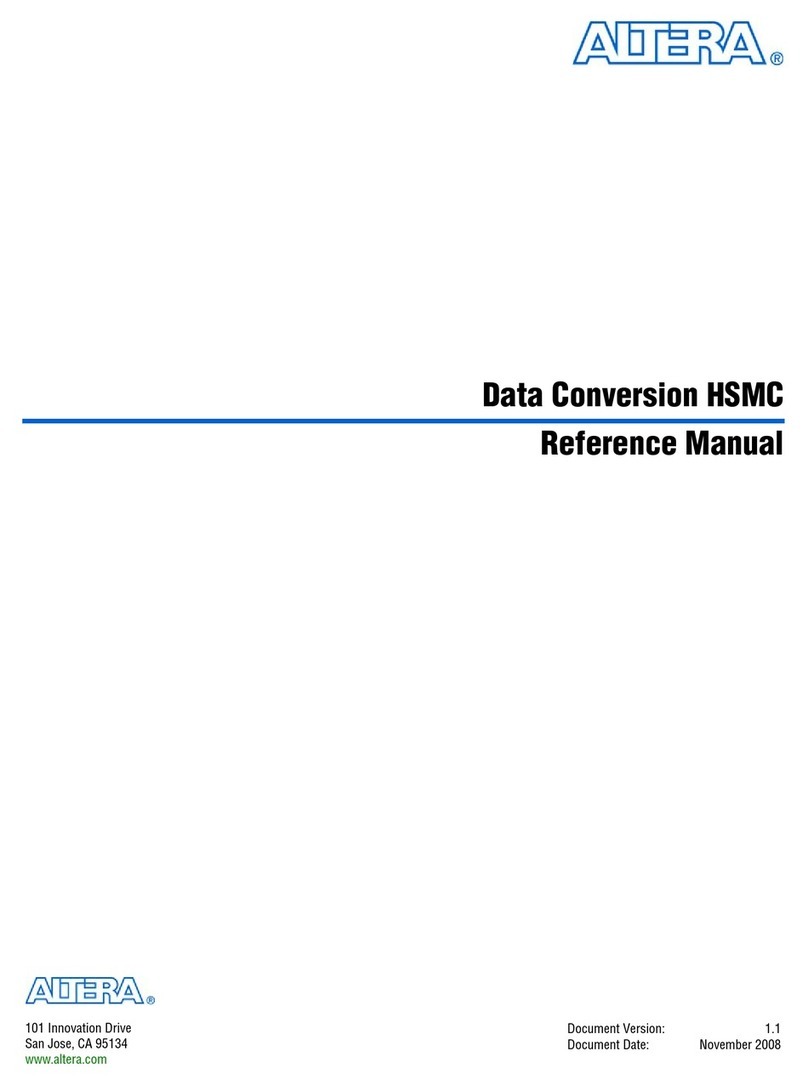Altera DE2 Board
ii
CONTENTS
Chapter 1 DE2-70 Package ...............................................................................................................1
1.1 Package Contents.................................................................................................................1
1.2 The DE2-70 Board Assembly..............................................................................................2
1.3 Getting Help.........................................................................................................................3
Chapter 2Altera DE2-70 Board.......................................................................................................4
2.1 Layout and Components ......................................................................................................4
2.2 Block Diagram of the DE2-70 Board ..................................................................................5
2.3 Power-up the DE2-70 Board................................................................................................9
Chapter 3 DE2-70 Control Panel....................................................................................................11
3.1 Control Panel Setup ...........................................................................................................11
3.2 Controlling the LEDs, 7-Segment Displays and LCD Display .........................................13
3.3 Switches and Buttons.........................................................................................................15
3.4 SDRAM/SSRAM/Flash Controller and Programmer........................................................16
3.5 USB Monitoring.................................................................................................................18
3.6 PS2 Device.........................................................................................................................19
3.7 SD CARD ..........................................................................................................................20
3.8 Audio Playing and Recording............................................................................................21
3.9 Overall Structure of the DE2-70 Control Panel.................................................................23
Chapter 4 DE2-70 Video Utility......................................................................................................25
4.1 Video Utility Setup.............................................................................................................25
4.2 VGA Display......................................................................................................................26
4.3 Video Capture ....................................................................................................................27
4.4 Overall Structure of the DE2-70 Video Utility..................................................................28
Chapter 5 Using the DE2-70 Board................................................................................................30
5.1 Configuring the Cyclone II FPGA.....................................................................................30
5.2 Using the LEDs and Switches............................................................................................32
5.3 Using the 7-segment Displays............................................................................................36
5.4 Clock Circuitry...................................................................................................................38
5.5 Using the LCD Module......................................................................................................40
5.6 Using the Expansion Header..............................................................................................41
5.7 Using VGA ........................................................................................................................45
5.8 Using the 24-bit Audio CODEC ........................................................................................48
5.9 RS-232 Serial Port .............................................................................................................49
5.10 PS/2 Serial Port..................................................................................................................49
5.11 Fast Ethernet Network Controller......................................................................................50
